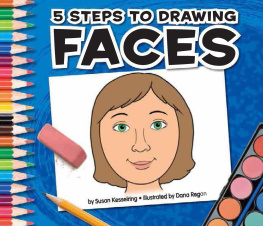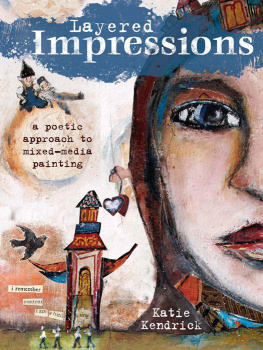
FACE VALUE

FACE VALUE

THE IRRESISTIBLE INFLUENCE OF FIRST IMPRESSIONS
ALEXANDER TODOROV
PRINCETON UNIVERSITY PRESS
PRINCETON AND OXFORD
Copyright 2017 by Princeton University Press
Published by Princeton University Press, 41 William Street, Princeton, New Jersey 08540
In the United Kingdom: Princeton University Press, 6 Oxford Street,
Woodstock, Oxfordshire OX20 1TR
press.princeton.edu
Jacket design by Kimberly Glyder
Jacket art courtesy of Shutterstock
All Rights Reserved
ISBN 978-0-691-16749-7
British Library Cataloging-in-Publication Data is available
This book has been composed in Minion Pro and Din
Printed on acid-free paper.
Printed in Korea
10 9 8 7 6 5 4 3 2 1
To the memory of my grandmother
Todorka Alexandrova Koleva (19242015)
and my friend
Ivan Toshev Bashovski (19511998)
CONTENTS

PROLOGUE

A crew from a Korean TV station is in my office. They are literally pushing into my face large pictures of Korean politicians running for the highest office in South Korea. I am supposed to tell them who has the looks to win the Korean elections. I get these kinds of media requests all the time when there are important elections coming up. You would think that in an institution like Princeton University, you would not find face readers. I agree with you: there shouldnt be. Because I dont have a crystal ball in my office, I always decline to provide an answer. But why is this extremely polite crewnot counting the pushing of the images into my facein my office? More than 10 years ago, my lab conducted a series of studies testing whether first impressions from facial appearance predict important elections in the United States. The first impressions did surprisingly well in predicting the winner. In a nutshell, politicians who look more competent are more likely to win elections.
Snap judgments from pictures of politicians predict their electoral success not only in the United States but also around the world. The continually expanding list of countries where the same results have been found includes Brazil, Bulgaria, Denmark, Finland, France, Italy, Japan, Mexico, and the United Kingdom. In these studies, to demonstrate that first impressions rather than prior knowledge about the politicians predict electoral success, the participants are often from a country different from that of the politicians. My favorite study was done by John Antonakis and Olaf Dalgas in Switzerland. The participants in their study were not only from a different country but also of a very different age. Antonakis and Dalgas had 5- to 13-year-old children first play a computer game reenacting Odysseuss trip from Troy to Ithaca. Then the children were asked to imagine that they were about to sail from Troy to Ithaca, shown pairs of pictures of French politicians who ran for the French parliament, and asked to choose one of them as the captain of their boat. Just like adults competence judgments, kids captain choices predicted about 70 percent of the elections.
A few years ago, I visited the Exploratorium, the Science Museum in San Francisco. Like any good science museum, it was full with kids. One of the exhibits in the psychology section was called competent candidates. It partially simulated our very first study on political elections. You see ten pairs of pictures of politicians who ran for the U.S. Senate, and you have to decide who looks more competent. My son, who was 7 years old at the time, did not have any problems doing the task, although his performance was far from stellar. He was not better than chance in predicting the winner. But the judgments of the more than 19,000 museum visitors who have done the task until that day correctly picked the winner in seven out of the ten elections. You can think of this as an informal and uncontrolled but fun replication of Antonakis and Dalgass findings from Switzerland. Children, just like adults, are prone to using face stereotypes.

It is just that easy to form impressions from faces. Find out for yourself. Who would you vote for?

FIGURE 1. Who looks more competent? To most people, this is an easy and quick decision. The face on the left was created by morphing the faces of a few politicians perceived to be more competent than their rivals. The face on the right was created by morphing the faces of these rivals.
Most people choose the face on the left without much thought. In fact, seeing these faces for one-tenth of a second gives you enough information to make up your mind. We cannot help but form impressions of others. These impressions are closer to perception than to thinking. We dont need to think, we see.
As Solomon Asch, one of the founding fathers of modern social psychology, wrote in 1946: We look at a person and immediately a certain impression of his character forms itself in us. A glance, a few spoken words are sufficient to tell us a story about a highly complex matter. We know that such impressions form with remarkable rapidity and with great ease. Subsequent observations may enrich or upset our view, but we can no more prevent its rapid growth than we can avoid perceiving a given visual object or hearing a melody. Impressions simply register on our senses. At least, this is how it appears to us. The subjectively compelling nature of impressions is the major reason we trust them even when we have evidence to the contrary.
Asch was not the first to note the immediacy of first impressions. More than 150 years before him, Johann Kaspar Lavater, the father of the pseudoscience of physiognomythe art of reading character in facesnoted: at the first advance of a stranger, we are certainly moved to declare our sentiments, in which sympathy and antipathy has a share without our perceiving it. Lavater also believed that these sentiments could be a direct readout of the strangers character, especially if these were the sentiments of a skilled physiognomist like himself. Lavaters works on physiognomy were phenomenally popular in Europe. His musings almost caused Charles Darwin to miss the Beagle voyage, which enabled Darwins revolutionary observations on evolution, on account of Darwins nose. Apparently, the captain of the ship, an ardent disciple of Lavater, did not think that Darwin possessed sufficient energy and determination for the voyage. But I think, Darwin noted in his Autobiography, he was afterwards well-satisfied that my nose had spoken falsely.
The nineteenth century was the heyday of physiognomy. Cesare Lombroso, the founding father of criminal anthropology, was writing books on the criminal man and woman and how they can be identified by external, physical characteristics. Francis Galton, a talented scientist but also a purveyor of unsavory ideas like eugenics, invented a photographic technique to identify human types ranging from the ideal English type to the criminal type. All modern morphing techniques, like the one we used to create the morphs of , originate with Galtons methods to create composite photographs.
Next page




















